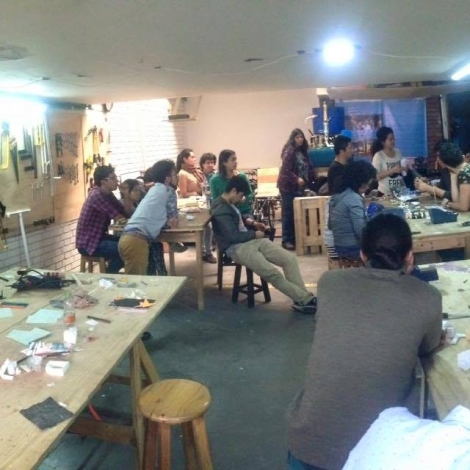Values at odds
The literature on grassroots innovation is increasingly focusing on how to harness the potential of partnerships to shape successful programs.
A perspective shift seems to be taking place among grassroots movements. Where they were once conceptualized as a reaction to top-down initiatives (e.g. country-wide computers for education policies), grassroots organizations now tend to work bottom-up but with a more holistic approach. In the context of international development, such change comes with both challenges and advantages.
On the one hand, grassroots organizations are groups that are mainly driven by their values; they are largely supported by the work of passionate community members who seek to change the status quo though civic action (e.g. maker movements and community organizations). These groups hold a strong belief that transition to a more equalized society should come as a result of the active, usually localized, work of each member of society. What this means is that these groups are constantly at odds in their core values with more traditional mechanisms for change in society (e.g. national policies and foreign aid), making collaboration between the two a challenging scenario. Rightfully so, these programs have a mixed record of success providing grassroots movements with a sense of meaning and responsibility in society.
On the other hand, big institutions have access to resources that bottom-up programs need to scale. The systems, resources and reach available to multilateral agencies, regional and national governments, academia and large companies, among other actors, represent a substantial opportunity for grassroots organizations. These actors also hold a wealth of knowledge and expertise at a systemic level that has proven beneficial for on-the-ground movements when conceiving their own programs. It may be helpful to see more examples of how to strike the right balance between values and impact, history and future and local and systemic. The following experience is a contribution towards that goal.
Local innovation centers
In the context of a global initiative housed at the Massachusetts Institute of Technology’s D-Lab: the International Development Innovation Network (IDIN), a group of local leaders in Bogotá, Colombia, constituted a local innovation center: C-Innova. The center is both a physical space and a movement that seeks to contribute to the fight against poverty in Colombia by democratizing access to technology. Examples of how the center meets that goal include the design, co-design and teaching of how to design low-cost technologies. The center also provides tools, infrastructure, knowledge, financing and connections to communities across Colombia. Core to its mission is the work with and from within the community, the development of programs that build upon local knowledge and the inclusion of local community members at all stages of the implementation process.
The center’s inception took place at IDIN’s International Development Design Summit (IDDS), part of USAID’s Higher Education Solutions Network in the U.S. Global Development Lab. The IDDS Zero Waste event took place in 2015 in the city of Cali, Colombia as a result of a partnership between a regional university (Universidad del Valle), the Mayor’s Office of the city of Cali, the local government’s environmental administration DAGMA, two waste-pickers associations, Tecnisólidos and the Recyclers Association of the City of Cali and the National University of Colombia. The initiative brought together more than 50 people from 10 different countries to co-create low-cost technologies along with community members in the context of waste management. The event resulted in 8 technology prototypes some of which were scaled to local companies and others became research projects.
The program represents not only an example of a successful partnership involving actors from across the board both national and international, but also the beginning of C-Innova as a grassroots enterprise and local movement. The Center currently operates from its headquarters in Bogotá and continues to harness the power of partnerships while keeping its values strong.
Work ahead
Top-down and bottom-up organizations are increasingly engaging in projects where they can potentially share common ground. Through the creation of mechanisms to keep checks and balances on both ends and ensuring that goals are achieved by all actors in the equation, communities are gaining access to new platforms to achieve development or actively fight poverty in their own terms. However, more examples of these types of collaboration gathered through research, monitoring and evaluation frameworks and program reports are needed in order for others to learn about the challenges and advantages of these mechanisms. Communicating these could create a snowball effect that as other parties are incentivized to forge their own partnerships through these types of mechanisms.

